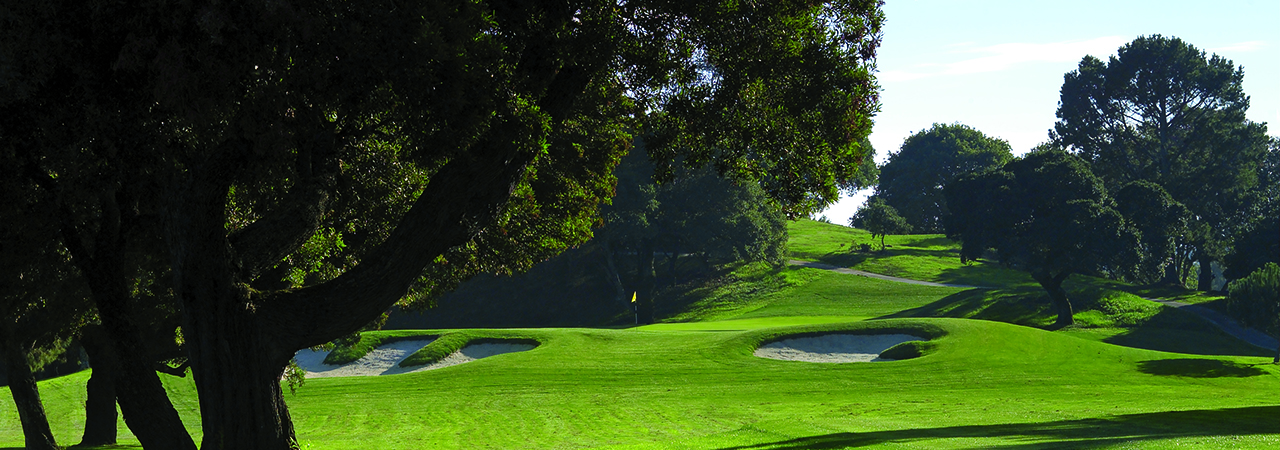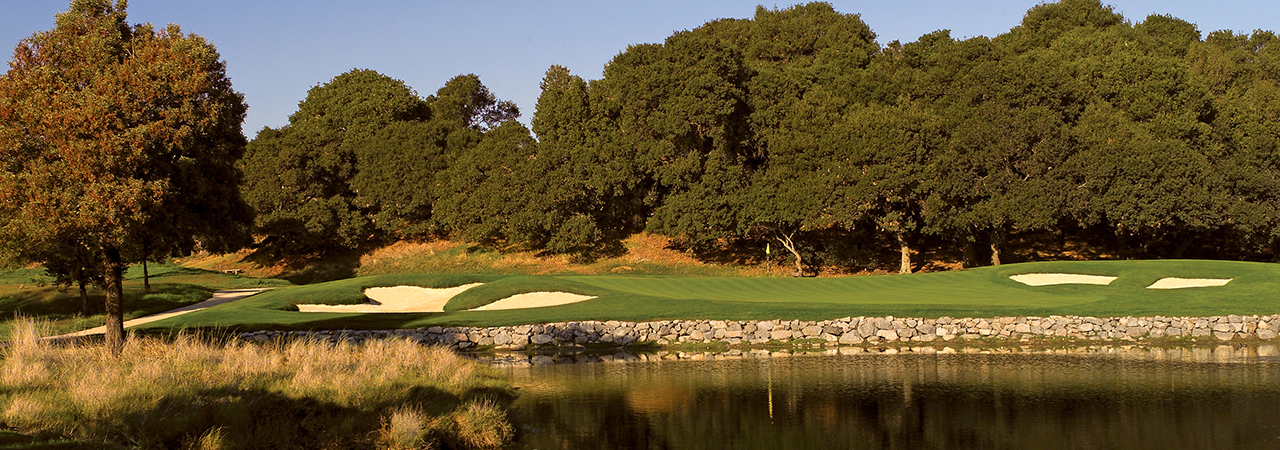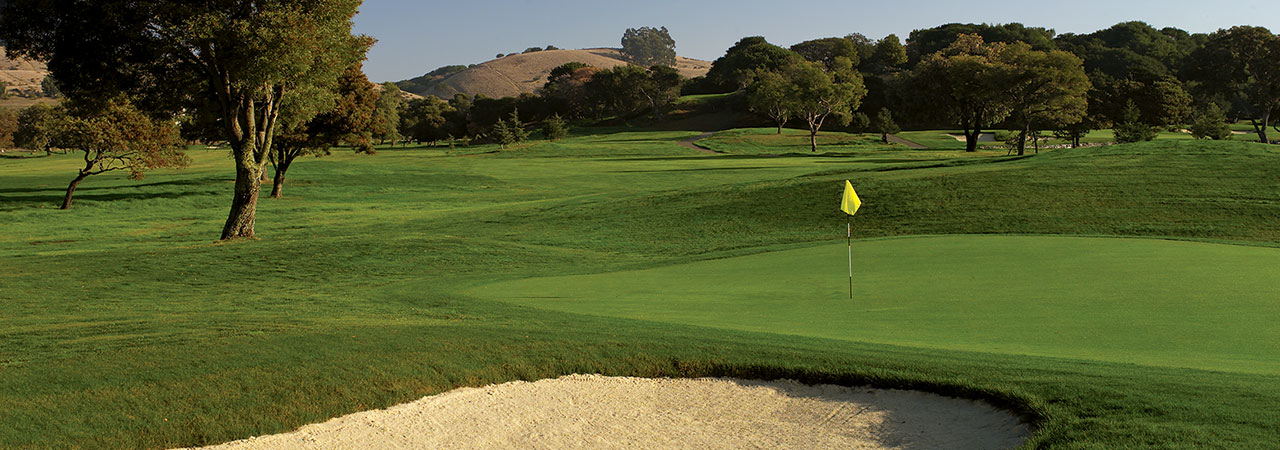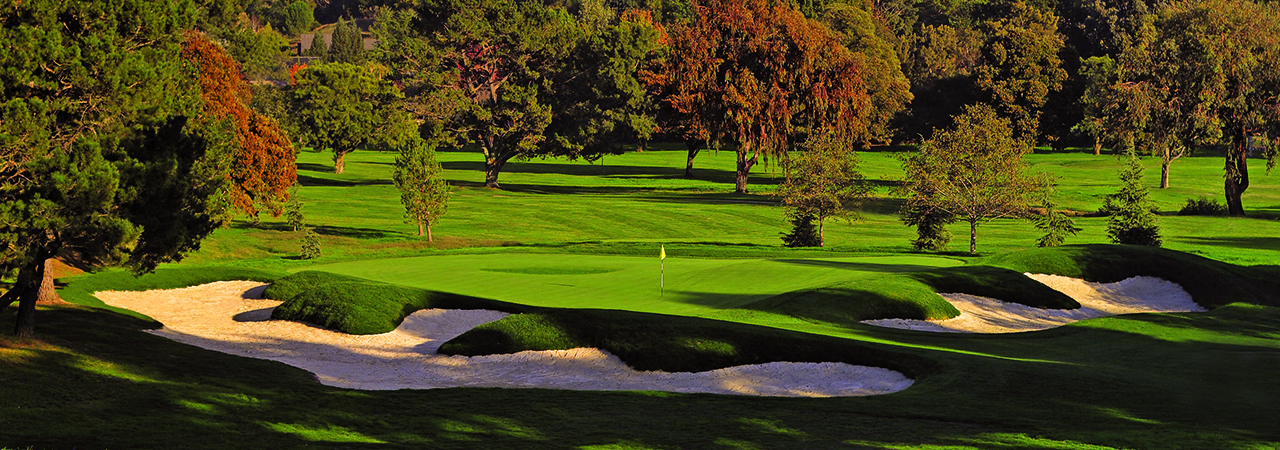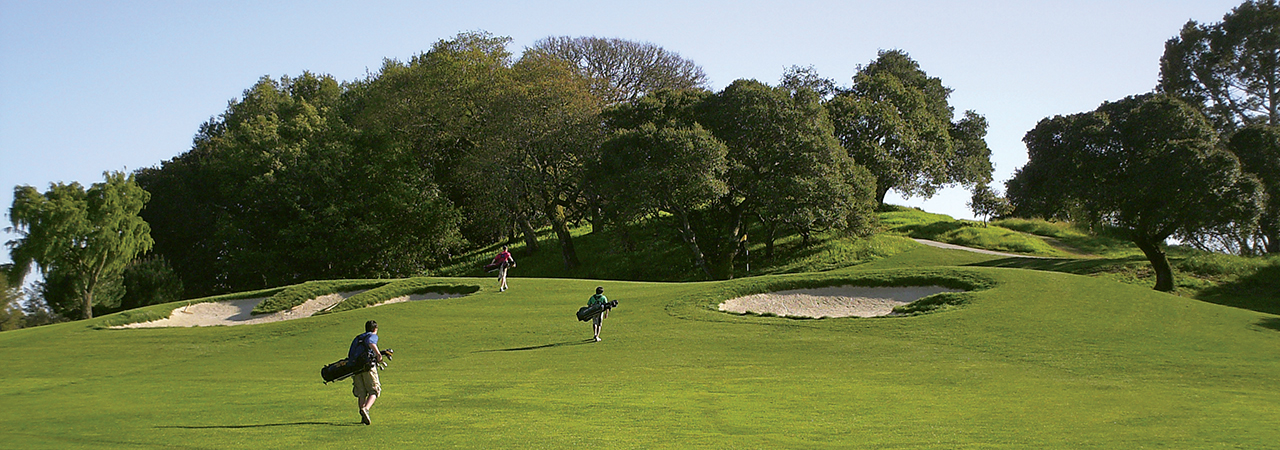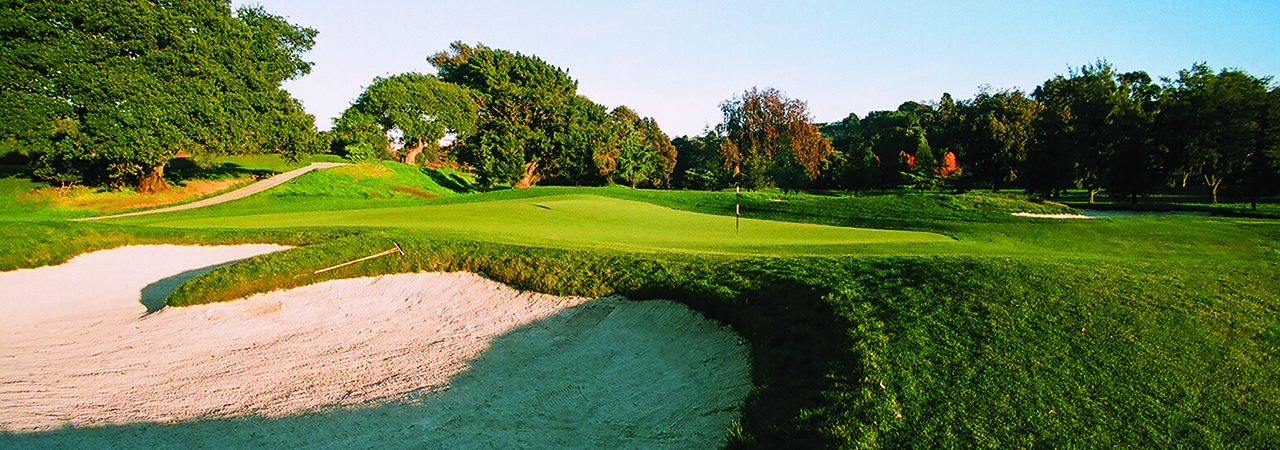Project Description
of design variety, shot values, conditioning, aesthetics, and lasting
impressions, Richardson’s new version improves in all categories
architecture and history, we all found the creative green structures
to be fun, engaging, and respectful of their Scottish roots
Project Overview
Peacock Gap was an originally designed in 1959 by William F. Bell, son of prominent California designer, William P. Bell. The course opened in 1960 as a par-71 layout.
Our work began in 2004 during an acquisition study for Golf Solutions. The course was eventually purchased by Golf Solutions and we started master planning and devising a way to creatively drain the low-lying site. Many of the fairways at Peacock Gap are at or below sea level, which created an unusual – and sometimes unmanageable – situation for drainage and maintenance.
The solution was to install drainage sumps into the ground. These large concrete boxes effectively de-water the course through a network of pumping systems. Water is now evacuated to canals and lagoons where it is then passed into the bay.
The aesthetic of Peacock Gap is a classic design with innovative green contours. The legacy of William P. Bell was adopted as a style for bunkers. Together, the classic approach and Bell bunker style was blended with innovative green contours to form an interesting course that is never dull or uninteresting. Among the new holes are risk-reward par-4s, reachable par-5s and a new par-3 that plays across a pond to a two-level green.
The course is, by design, not long. At 6,261 yards (back), 6,100 yards (regular) and 4,800 yards (forward); the par-71 course was initially rated at 70.0
New Holes at Nos. 5, 6, 7, 8, 9 and 17 have transformed Peacock Gap into a virtually new course. While there are links to the past, a complete rebuilding of all features (tees, bunkers and greens) has resulted in the rebirth of a longtime favorite in Northern California.
As part of the improvements, turf was reduced by 16 acres and removed from managed irrigation and turf care to native grass habitats.
Quick Facts
Scope: Acquisition Evaluation, Master Planning, Design, Approvals, Bidding, Construction Documents, Construction Observation Services, Branding & Signage
Course: 18-holes/Par-71/6,300-yards, Short Game Area, Range
Budget: $4.8 million USD
Completion: Opened 2006
Address: 333 Biscayne Drive, San Rafael, California
Video Links
Peacock Gap Hole No. 7 Video
Peacock Gap Hole No. 10 Video
Peacock Gap Hole No. 11 Video
Peacock Gap Hole No. 15 Video
Peacock Gap Practice Area
Peacock Gap – William F. “Billy” Bell

